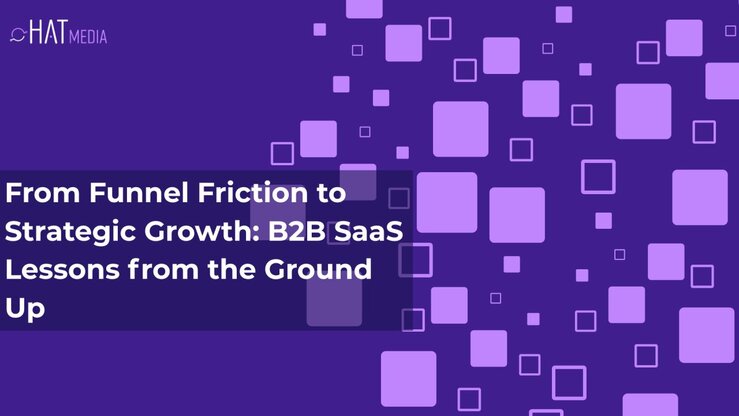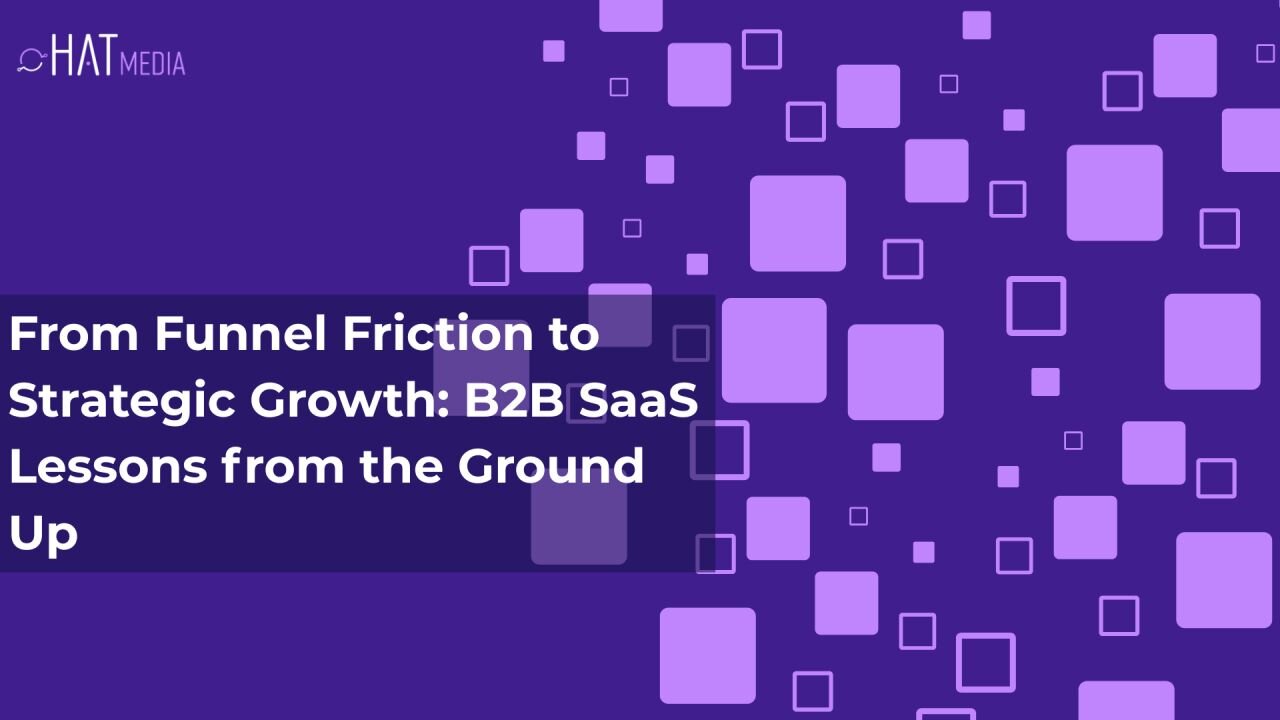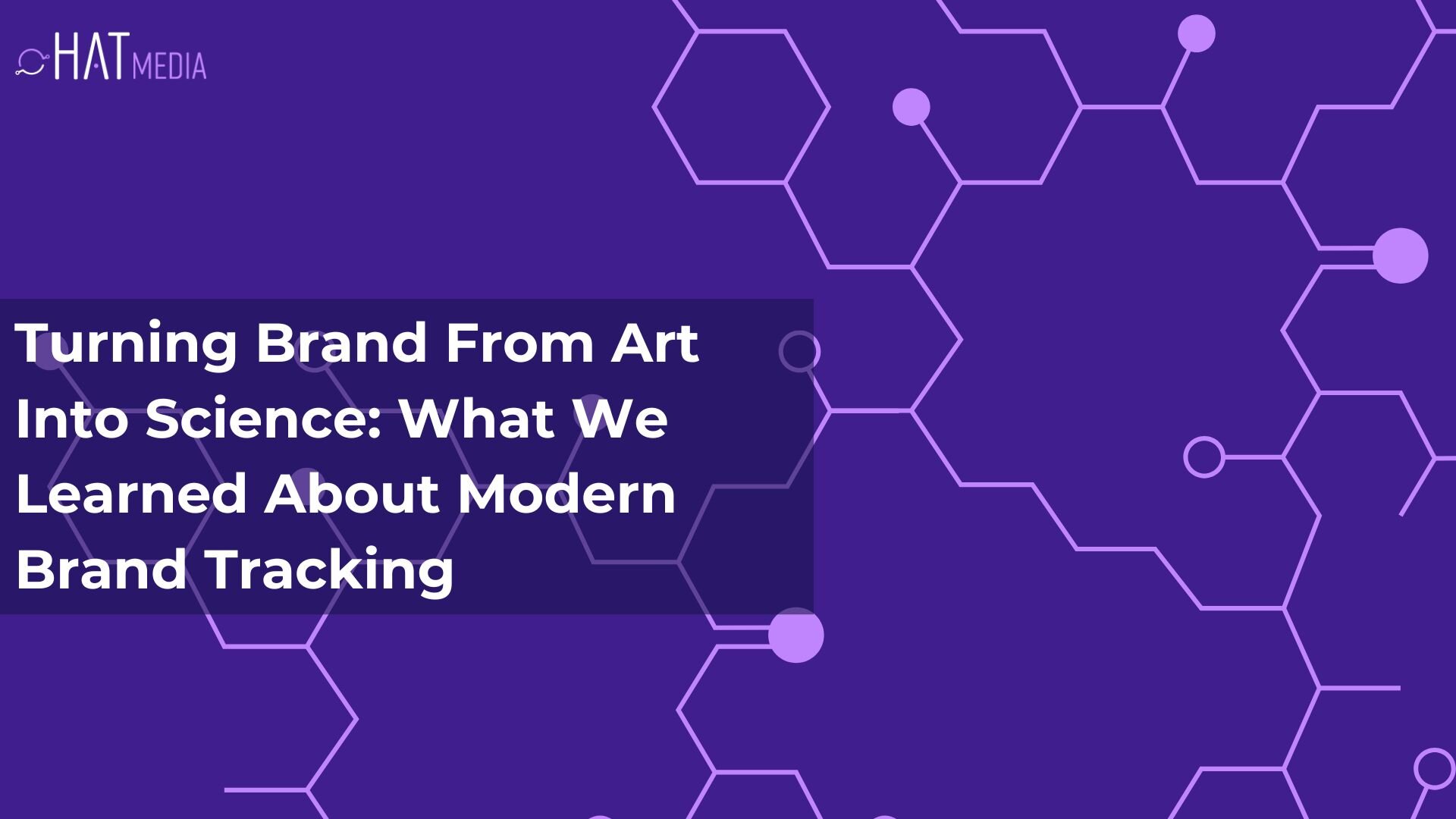From Funnel Friction to Strategic Growth: B2B SaaS Lessons from the Ground Up

What separates SaaS companies that scale with clarity from those that churn through tactics without traction?
Often, it’s not the product but the way they listen, learn, and layer strategy at every growth stage.
In this edition of Under the Hat, we break down a refreshingly honest conversation with Tony Yang, Head of Growth at Mucker Capital and founder of Rev Optica. Tony brings two decades of experience growing B2B SaaS businesses from pre-product startups to enterprise-scale operations. His insights are a goldmine for founders, marketers, and sales teams seeking sustainable growth strategies, not just growth hacks.
Let’s explore the key takeaways and how they apply to your own go-to-market approach.
Want to know more? Watch the Episode
In this episode, Tony shares the real stories behind demand gen, product-led growth, account-based marketing, and AI in B2B SaaS plus the mistakes many startups make and how to avoid them.
Step One: Know Your Audience Better Than They Know Themselves
Every successful go-to-market strategy starts with clarity around your Ideal Customer Profile (ICP). Tony emphasises that this goes beyond job titles. It's about understanding what your audience cares about, what keeps them up at night, and how your product meaningfully fits into that.
In early-stage SaaS, founders often default to generic outbound messaging that dives into features too early. Instead, Tony suggests a more effective route: start with a softer approach that frames your message as seeking feedback.
“People are more altruistic with their time if you make them feel like the expert. Ask for feedback, not a sale.”
This shifts conversations from cold pitch to collaborative validation and builds lasting relationships from day one.
Message–Market Fit > Product–Market Fit
Everyone talks about product–market fit, but Tony introduces a sharper, more testable concept: message–market fit. Can your value proposition resonate with your audience before they touch the product?
If you’re not getting strong engagement or replies, it’s not a volume problem, it’s likely a mismatch in positioning. By adjusting your language, targeting pain points more directly, and personalising your message based on role and industry, you start identifying what’s truly sticky.
Pro tip: Use outbound not just for lead gen, but for message testing. It's one of the cheapest, fastest ways to validate resonance at scale.
Product-Led Growth Is Not Just “Freemium”
PLG is one of SaaS's buzziest terms but it’s often misunderstood. As Tony puts it, offering a free trial is not the same as having a product-led growth strategy.
Real PLG is about designing your product to deliver value early, consistently, and repeatedly. That means:
- Identifying your product’s "aha moment"
- Building user journeys that get people there quickly
- Supporting users through that journey with onboarding, nudges, tutorials, or even human help
And here’s the kicker: PLG isn’t just for self-serve tools or SMBs. Tony has applied product-led strategies in enterprise settings through pilot programs and hybrid models.
“PLG is about helping different personas realise value. Whether it’s a self-serve user or an enterprise buyer.”
Don’t Just Fill the Funnel, Fix It.
One of the biggest go-to-market mistakes Tony sees? Teams focus too heavily on acquisition while ignoring what happens next.
This applies to both traditional demand generation and PLG:
- In demand gen, marketing teams chase MQLs without nurturing or qualification alignment resulting in the classic “these leads are crap” debate between marketing and sales.
- In PLG, teams drive traffic to signups, but don’t invest in activation, retention, or referral loops leading to a leaky funnel and high churn.
The fix? Align your funnel with the buyer journey. Don’t just optimise for signups or demos. Optimise for value realisation, usage, retention, and advocacy.
Demand Creation vs. Demand Capture
Another powerful insight Tony shares is the distinction between demand creation and demand capture.
- Demand capture: Targets people already in-market; they know the problem and are looking for solutions. This is where product-led messaging or feature-focused ads can work.
- Demand creation: Builds awareness with people who haven’t yet prioritised solving the problem. This requires empathy, education, and framing urgency not a product pitch.
Many SaaS companies default to capture mode too early. But in B2B, especially at higher price points, decision journeys are long. Creating demand through thought leadership, storytelling, and value-first content pays off in deeper engagement and better-fit deals.
The Role of Sales–Marketing Alignment (And Where ABM Helps)
Account-Based Marketing (ABM) is more than a trend, it’s a strategic shift. But Tony warns: ABM doesn’t automatically create alignment between sales and marketing. It requires it.
To make ABM work, you need:
- Jointly defined target accounts
- Clear roles for sales and marketing at each stage
- Unified data and visibility (ideally in your CRM)
- A shared understanding of what success looks like
You also don’t need to invest in expensive ABM tools upfront. The core of ABM can be executed with the right mindset and collaboration, personalised outreach, content tailored to buyer needs, and cross-functional planning.
ABM for Early-Stage Startups? It Depends
Is ABM right for early-stage SaaS businesses? Tony says it depends on your TAM and deal size.
- If your market is niche and well-defined (e.g. public universities in North America), ABM can work early helping you focus resources and build deep relationships with high-value accounts.
- If your market is broad or transactional (e.g. $200/month SaaS tools for tradespeople), one-to-many demand gen may be more efficient.
For larger deals, ABM shines when marketing and sales co-create touchpoints from personalised assets to strategic dinners and curated roundtables.
AI Tools for Marketers: Use With Purpose
The flood of generative AI tools has changed the game, but Tony is clear-eyed about their value:
- Don’t use AI for the sake of it. Use it to support workflows like improving writing, summarising interviews, or speeding up research.
- AI shouldn’t replace creativity or expertise. Content still needs perspective, not just paraphrasing.
- Tools like Copy.ai, Writer, and others are useful but only if your team knows how to use them to enhance quality, not dilute it.
“If your brand is about thought leadership, don’t rely on LLMs trained on generic web content. It won’t differentiate you.”
Final Thought: Don’t Skip the Build
Asked what he’s most excited about, Tony’s answer isn’t funding or exit plans. It’s building solving real pain points through iterative development and user feedback.
That mindset of learning, testing, validating, and evolving is what sets strong SaaS founders apart. Whether you're bootstrapping or backed by venture capital, sustainable growth comes from depth, not speed

